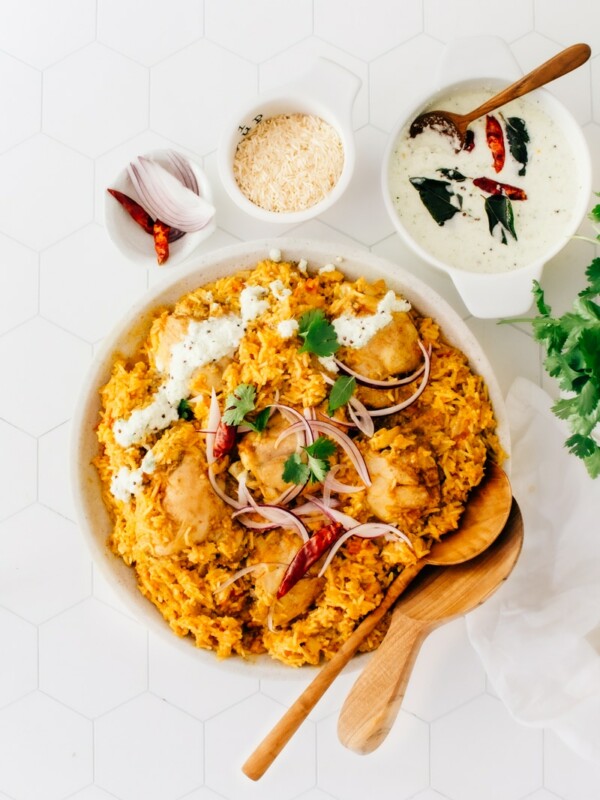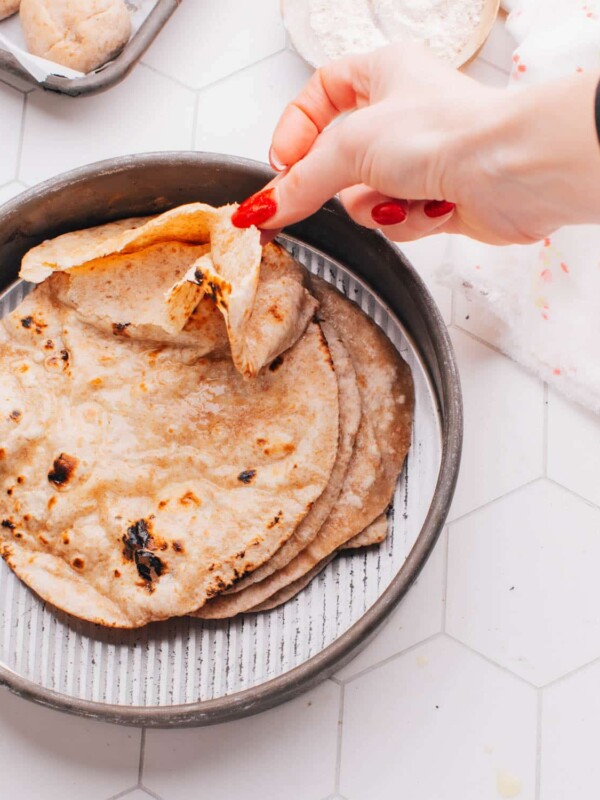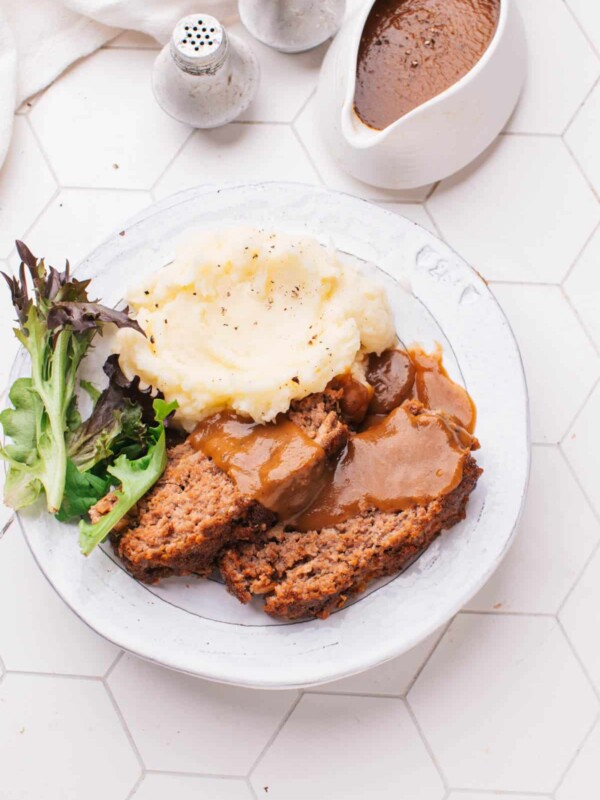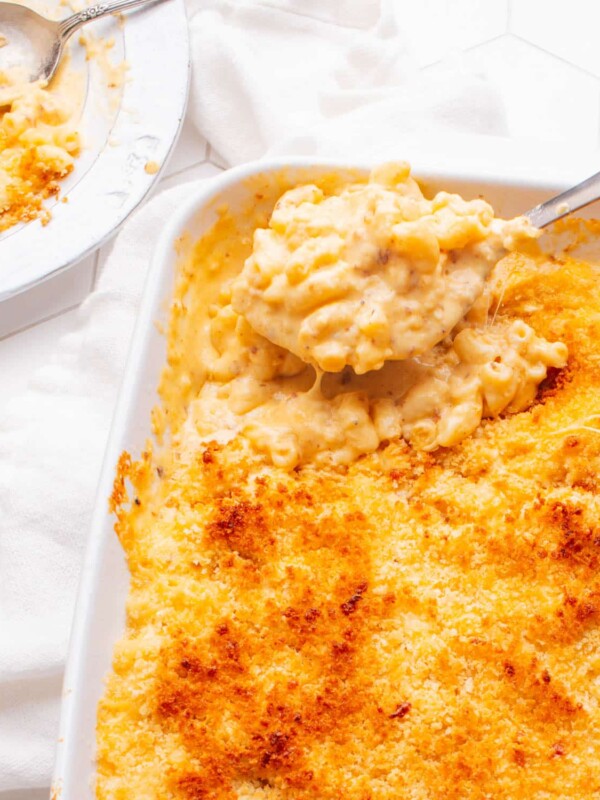
My mother-in-law is a fabulous cook, with her specialties ranging from rich, bejewelled biryanis to humble lunchtime tuna “cutlets” (pan-fried fish and potato cakes).
Amma doesn’t really like to cook, though – she admits it is done out of duty. The gastronomical delights that my hubby grew up on – all those fresh-daily, hand-rolled rotis (healthy wholewheat flatbreads akin to flour tortillas); all those cardamom-infused, milky payasams (rice or vermicelli puddings); all those from-scratch, stick-to-the-ribs chickpea curries (nary a canned chickpea in sight) – those were all a labour of love for her family.
And I mean labour – it’s not uncommon for an Indian home cook to spend 6 or more hours a day in the kitchen. Breakfast ends and lunch preparation begins. Puts our dependence on convenience foods and quick-and-easy meals into perspective, doesn’t it?
This dish is one of my favourites that she makes for us. It’s usually a breakfast dish, but Adarsh and I eat it any time of day. I gleaned his mom’s recipe from watching her make it several times. An internet search tells me their are many variations on this dish – this version is authentic to their Keralan home, evolved a bit to my kitchen.

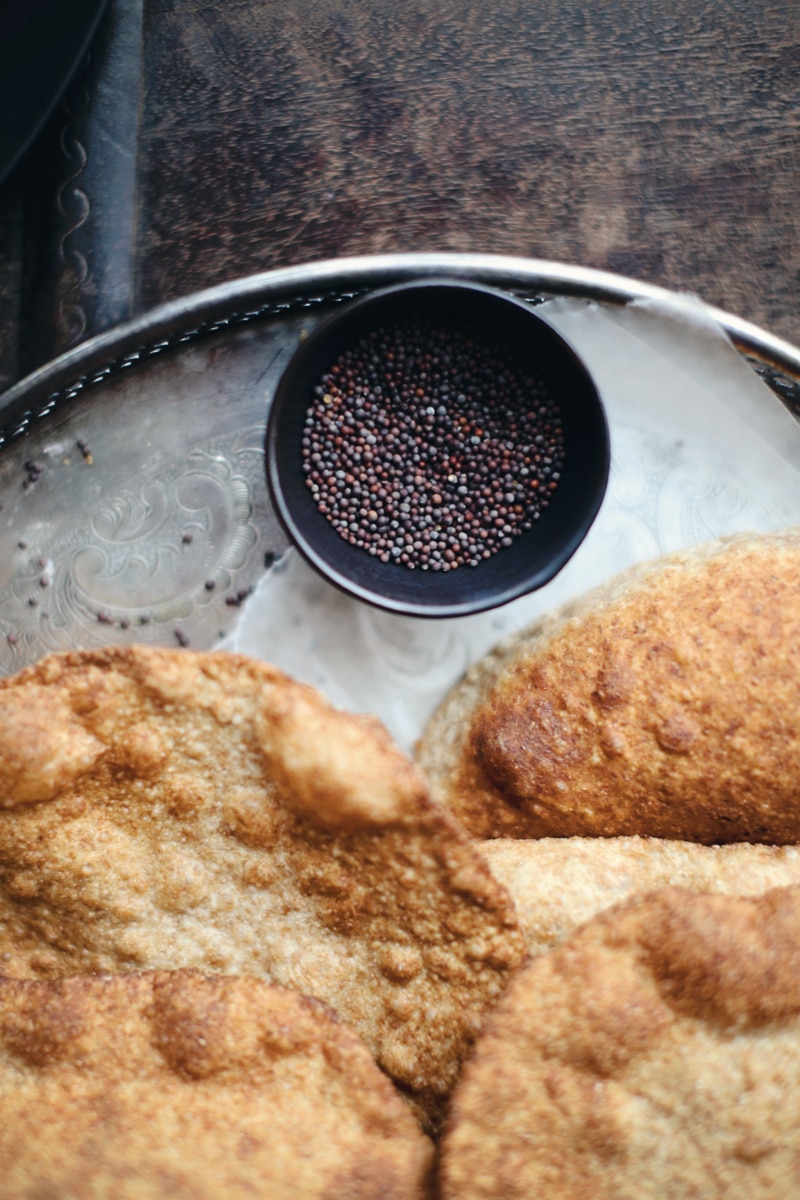
Mustard seeds, ginger, chiles and curry leaves are cornerstone ingredients in South Indian cuisine, which boasts fresh flavours very different from the spice-dense curries common to other parts of India.
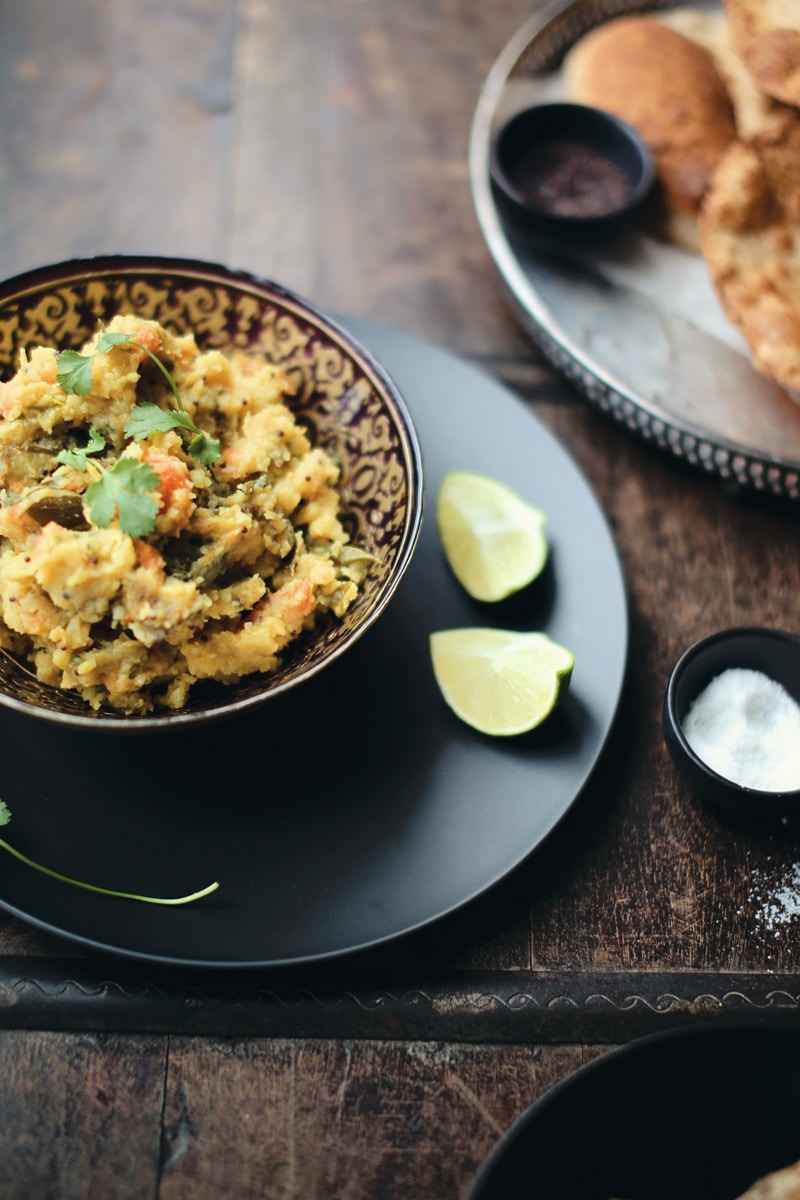
This South Indian version of potato (aloo) bhaji starts with onions, slowly cooked down to a sweet golden brown – no rushing this in this step.
Mustard seeds and curry leaves are added – sauteeing them in this step coaxes out their nutty flavours.
Potatoes, carrots and tomatoes are then simmered until soft with some hot chile (fresh and ground), fresh ginger, and a dash of turmeric. Cilantro and lime juice are stirred in at the end; although not traditional, I find they add a welcome brightness.
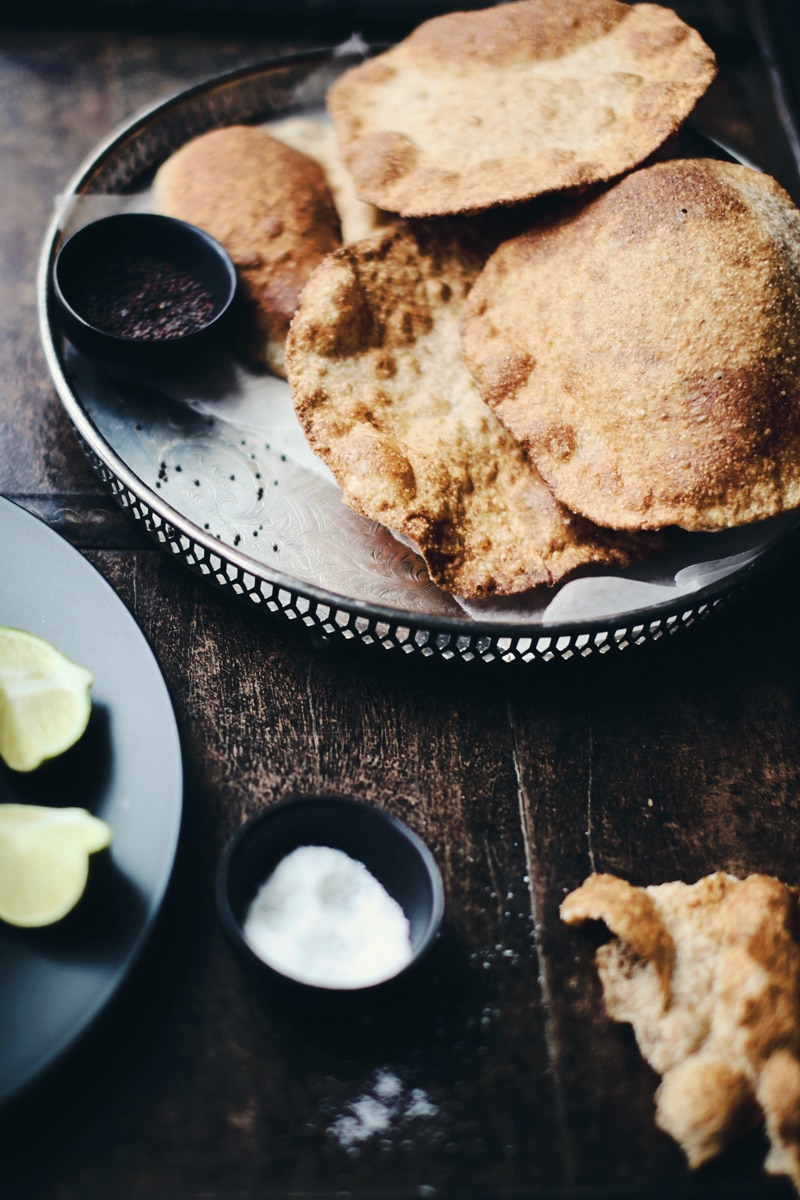
This bhaji is typically served at the break of day with stack of hot pooris, which are basically rotis fried in oil until they puff up and submit their healthfulness to golden deliciousness.
But you can easily nix the deep-fry and serve bhaji with store-bought whole grain tortilla wraps, or these homemade ones (go ahead and sub whole wheat flour).
This is true, tummy-warming comfort food.
Ingredients
For bhaji:
- 1/4 cup vegetable oil
- 3 tbsp butter
- 1 medium onion, chopped (yield 2 cups)
- 1 tbsp mustard seeds
- 1/2 cup loosely packed curry leaves
- 1 1/2 tbsp finely grated ginger
- 2 serrano peppers, minced
- 2 medium tomatoes, diced
- 1 tsp turmeric
- 1/2 tsp cayenne pepper
- 1 tbsp kosher salt (or 1 1/2 tsp table salt)
- 4 medium russet potatoes, coarsely chopped (3 lbs)
- 3 carrots, peeled and chopped (3/4 lb)
- 1/2 cup minced cilantro
- 1/2 lime, juiced
For pooris:
- 3 cups whole wheat flour
- 1 tsp kosher salt
- 1/2 tsp baking powder
- 1 cup warm water
- vegetable oil, for frying
Preparation
For bhaji:
-
Heat vegetable oil and butter in a large pot or dutch oven over medium heat. Add onions and cook until soft and golden, about 20 minutes, reducing heat if they start to brown too quickly.
-
Add mustard seeds and curry leaves; sauté 1-2 minutes until fragrant. Be cautious as mustard seeds may pop and sputter.
-
Add ginger, serrano peppers and tomatoes, cook 1 minute.
-
Add turmeric, cayenne pepper and salt. Cook until oil glistens on top, 3-5 minutes.
-
Add potatoes and carrots, then top with 3 cups of water. Cover pot and bring to a boil over high heat, then reduce to medium and cook until potatoes and carrots are very soft, about 30 minutes, stirring often.
-
Coarsely mash with a potato masher or wooden spoon, then stir in cilantro and lime juice.
For pooris:
-
In a large bowl (or stand mixer), combine flour, salt and baking powder. Add warm water and knead until the dough comes together, adding more water or flour if needed to make a workable, not-too-sticky dough. Knead about 5 minutes by hand or with mixer, then let dough rest at room temperature for at least half an hour, and up to 4 hours.
-
Roll dough into a log, and cut in half. Cut each half into 8 equal sized pieces, yielding 16 total. Roll each piece between your hands to form a ball, flatten slightly with your palms, then roll out into a circle 1/8″ thick. Repeat with remaining dough.
-
Place a heavy pot or cast iron pan over medium-high heat, and add oil until it is about 1 1/2″ deep. When oil starts to shimmer, use tongs to slip in the first poori. It should bubble right away – if it doesn’t, the oil isn’t quite hot enough.
-
Cook until it starts to puff up and becomes golden on the underside, then flip and continue golden on the other side, too (2-3 minutes total). Transfer to a paper towel-lined plate, and repeat with remaining dough.
